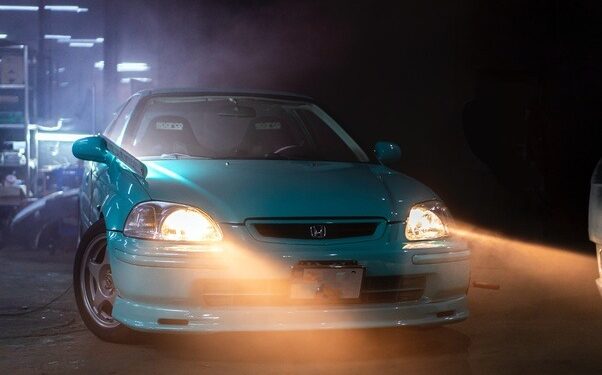Have you ever found yourself wondering why your car’s headlights persistently stay on even after you’ve turned off the engine? It’s a common occurrence that often sparks curiosity and, at times, concern. In this comprehensive blog post, we’re diving into the reasons behind this phenomenon, exploring the intentional features and potential issues that could be at play in your vehicle’s lighting system.
Automatic Headlights: Shedding Light on the Situation
A prevalent reason for headlights staying on post-engine shutdown lies in the realm of automatic headlights. Many modern vehicles boast automatic headlight systems, equipped with sensors strategically placed on the dashboard or near the rearview mirror. These sensors gauge ambient light levels and trigger the headlights to activate when darkness falls. The purpose? Enhancing safety by ensuring that headlights illuminate when needed, even if the driver forgets to manually engage them.
How Automatic Headlights Operate: A Quick Overview
- Light Sensors: Embedded in your vehicle, these sensors measure the ambient light outside.
- Threshold Setting: Programmed with a specific light level threshold, the system activates headlights when ambient light drops below this threshold, signaling dusk or cloudy conditions.
- Delay Feature: To prevent rapid on-off cycles, a delay feature retains headlight activation for a brief period after turning off the vehicle.
- Manual Override: Most vehicles with automatic headlights offer a manual override, allowing drivers to control lighting irrespective of ambient conditions.
If your headlights linger on after parking and powering down, it’s likely the automatic headlight system diligently performing its function. As long as the lights eventually extinguish, either after a delay or when complete darkness sets in, it’s a normal and intentional feature.
Daytime Running Lights (DRLs): Illuminating the Daylight Mystery
Daytime Running Lights (DRLs) contribute another layer to the puzzle. DRLs are low-intensity lights separate from the main headlights, designed to enhance vehicle visibility during daylight hours. Activating automatically when the ignition is on, DRLs remain on while the engine runs, even when parked. This intentional design serves the crucial safety purpose of making the vehicle more conspicuous, even when stationary.
Exploring Electrical Issues: The Potential Culprits
While automatic headlights and DRLs are common causes, electrical issues can’t be overlooked. Malfunctions in components or wiring may contribute to persistent headlight illumination. Here are some electrical factors to consider:
- Faulty Light Sensors: Malfunctioning sensors may inaccurately detect light levels, leading to untimely headlight activation or deactivation.
- Solution: Diagnostic testing and sensor replacement or recalibration by a qualified technician may be necessary.
- Ignition Switch Problems: Headlight operation in some vehicles correlates with the ignition switch. Issues with the switch or its wiring can result in headlights staying on.
- Solution: Repair or replace the faulty ignition switch or wiring to resolve the issue.
- Relay Issues: Malfunctioning headlight control relays can prevent timely deactivation.
- Solution: Replacing the faulty relay typically resolves the problem, with the specific relay identified through consultation with the vehicle’s service manual.
- Battery Drain: Unintentional headlight activation can lead to a drained battery, causing lights to persist.
- Solution: Jump-starting or recharging the battery is necessary, addressing the root cause to prevent recurrence.
- Aftermarket Modifications: Modifications related to the lighting system may lead to unexpected behavior.
- Solution: Consult with the installer or a qualified technician to diagnose and rectify issues stemming from aftermarket modifications.
In essence, while automatic headlights and DRLs often explain persistent illumination, electrical issues may also contribute. If you notice your headlights staying on unexpectedly, referring to your vehicle’s manual and seeking assistance from a qualified technician is advisable. Understanding the intricacies of your car’s lighting system ensures safe and effective usage.
Source: Mcleodproducts


